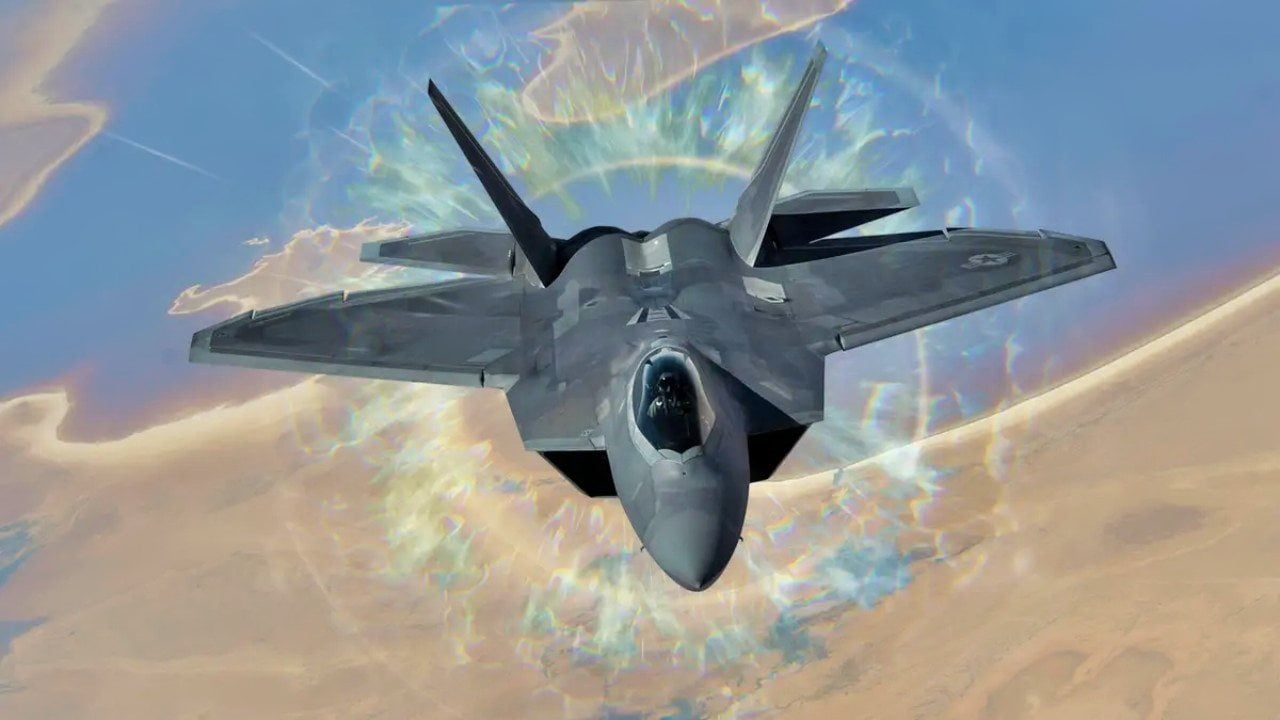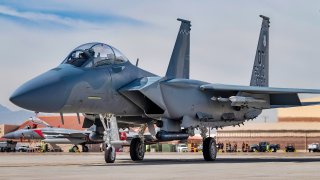America’s Defense Spending Is a Nightmare
America faces a looming debt crisis exacerbated by wasteful defense spending as the U.S. Department of Defense (DoD) struggles to achieve strategic objectives despite lavish funding.
Summary and What You Need to Know: America faces a looming debt crisis exacerbated by wasteful defense spending, as the U.S. Department of Defense (DoD) struggles to achieve strategic objectives despite lavish funding.
-While rivals like China and Russia spend less, they have kept pace with the U.S. militarily, particularly in areas like hypersonic weapons.
-The national debt threatens U.S. economic stability, and the Pentagon's uncoordinated spending on programs like aircraft carriers, rather than key platforms like hypersonic and directed-energy weapons or enhancing the submarine fleet, worsens the issue.
-Reforming defense spending and prioritizing practical, threat-specific investments are critical to safeguarding U.S. security and fiscal health.
America’s Debt Crisis: How Defense Spending Threatens National Security
America has a problem. It’s going broke. After decades of profligate spending, a debt crisis to dwarf the one that afflicted Europe in the 2010s is upon us.
The U.S. government suffers from an inability to prioritize. As such, it just keeps digging America’s fiscal hole deeper.
Social Security, Medicare, and Medicaid are the biggest expenditures that risk pushing the U.S. into that hole. But the defense budget is also a top-five expenditure. . Indeed, the U.S. Department of Defense is one of the most lavishly funded, byzantine bureaucracies in the world.
Wasting Our Money
While the Department of Defense consumes an ever-growing share of the pie, it is increasingly unable to achieve its objectives. The United States in fact is at great risk of losing a major if one breaks out.
This, despite all the whizbang gadgetry the DoD is afforded, including new aircraft carriers that cost a staggering $13 billion per unit and yet are vulnerable to relatively cheap anti-access/area-denial (A2/AD) systems.
America’s rivals, including China and Russia, spend considerably less on their defense budgets. Yet they are at the very least keeping up with the Americans militarily, and surpassing them in areas like hypersonic weapons. Contrary to what modern American politicians and military leaders believe, more money does not automatically equal either great capabilities or strategic dominance.
The U.S. national debt – caused, in no small part, by egregious defense spending – is itself a long-term national security threat.
Expanding the national debt, printing money, all these things weaken the U.S. economy and the American dollar. This opens an otherwise nonexistent line of geoeconomic attack upon the very foundation of the American superpower: the U.S. dollar. Indeed, we’ve already gotten a preview in the last few years of how U.S. rivals, such as China and Russia, seek to use the BRICS alliance to undermine the U.S. dollar as the world’s primary reserve currency.
Losing the dollar as the primary reserve currency means that the spending-and-printing that the U.S. government engages in to prop its functions up will evaporate. In the long-term, this might work out best for our beleaguered nation. In the near-term, though, it would cause chaos, panic, and weaken the United States.
The National Debt is a National Security Threat
Part of the problem with America’s drunken spending on defense has been that Washington’s leaders, from both political parties over the course of decades, have no real strategic view for what they want the massive spending on defense to accomplish. When it comes to building the systems needed to secure the United States, the a lá carte approach we’ve been going with won’t work anymore.
The Pentagon must identify key platforms that will actually threaten U.S. rivals and restore deterrence. One of the biggest threats the U.S. faces comes from those aforementioned A2/AD systems deployed by U.S. foes to stunt the ability of the U.S. military to project power near an enemy’s shores. There are currently no real methods for overcoming that threat.
Developing longer-range weapons, such as hypersonic kill vehicles and directed-energy weapons; enhancing the size of America’s submarine fleet; and building swarms of unmanned underwater vehicles are far better investments than building more aircraft carriers.
What We Should Be Focused On
What’s more, the United States today is closer to nuclear warfare than at any other point since the Cuban Missile Crisis. Despite this fact, the Defense Department continues underfunding its Space Force. More important, the U.S. Space Force lacks the strategic vision necessary to justify increased funding.

Building a comprehensive orbital missile and hypersonic weapons defense capability must be the greatest priority. The U.S. military would instead see those funds go toward wasteful projects like the Next Generation Air Dominance program or the Navy’s ill-fated Constellation-class frigate.
It isn’t that the Pentagon shouldn’t spend money. It’s how the DoD spends money and what they spend it on that is making the defense budget one of a handful of major expenditures that risks hollowing out the U.S. dollar.
Congress and the president – no matter who that is – must spend the next several years forcing the Pentagon to prioritize practical solutions to these big problems and engender a culture of thriftiness that does not currently prevail at the Department of Defense. Time is not on our side. But with these changes, the country will be better off. And the Department of Defense will be a better organization for it.
Author Experience and Expertise: Brandon J. Weichert
Brandon J. Weichert, a National Interest national security analyst, is a former Congressional staffer and geopolitical analyst who is a contributor at The Washington Times, the Asia Times, and The-Pipeline. He is the author of Winning Space: How America Remains a Superpower, Biohacked: China’s Race to Control Life, and The Shadow War: Iran’s Quest for Supremacy. His next book, A Disaster of Our Own Making: How the West Lost Ukraine, is due October 22 from Encounter Books. Weichert can be followed via Twitter @WeTheBrandon.
All images are Creative Commons or Shutterstock.
From the Vault
Russia Freaked Out: Why the U.S. Navy 'Unretired' the Iowa-Class Battleships
Battleship vs. Battlecruiser: Iowa-Class vs. Russia's Kirov-Class (Who Wins?)


